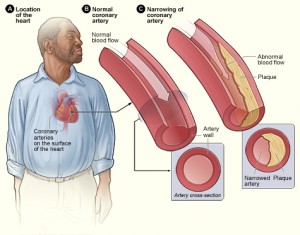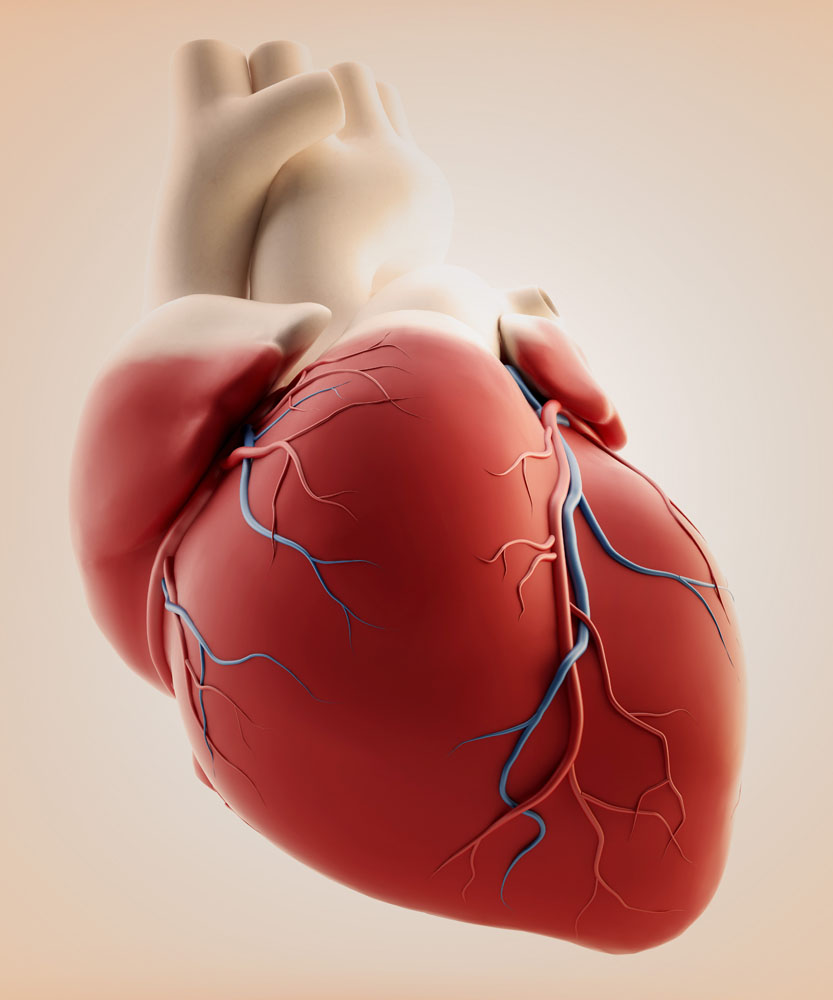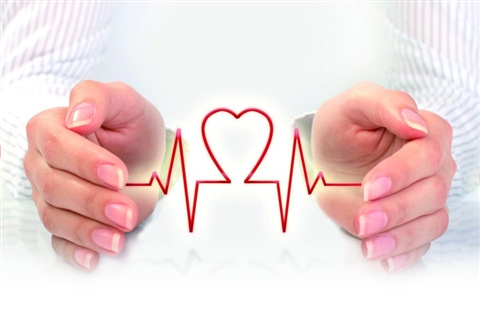Cholesterol is a waxy substance that comes from two sources: your body and food. Your body, and especially your liver, makes all the cholesterol you need and circulates it through the blood. But cholesterol is also found in foods from animal sources, such as meat, poultry and full-fat dairy products. Your liver produces more cholesterol when you eat a diet high in saturated and trans fats.
Total Cholesterol
What’s ideal: Under 200
First, cholesterol isn’t technically the same thing as fat. Cholesterol is a soft, waxy, fatlike substance mainly produced by the liver. And it’s not inherently bad; in fact, it’s vital to all kinds of bodily processes, from keeping cells healthy to making hormones. But sometimes the body cranks out more cholesterol than you need, and the things you eat, what you weigh, and the way you live can add even more, putting you at risk for heart disease. But improving your diet, losing weight, and increasing your exercise can reduce those risks, so keep reading.
We’ve learned a lot about cholesterol in the past 20 years, says Dr. Andersen, and what we know is constantly evolving, too. “When I was in medical school, for example, we were taught that having a total cholesterol number of less than 250 was normal, and we didn’t even know what HDL and LDL were. Today I still look at total cholesterol, and we know we want it to be under 200, but HDL and LDL are much more important.”
The Bad Guy: LDL
What’s ideal: Under 100
It stands for low-density lipoprotein, but you can just remember the “L” stands for “lousy,” says Dr. Roizen. LDL circulates through your bloodstream and deposits cholesterol in the walls of your blood vessels. This actually starts when you’re young; you get little deposits of the fatty stuff here and there. Over the years it can build up, and other stuff traveling through your bloodstream, such as waste products or calcium, gets stuck on there, too. All this gunk combines to form plaque, which can cause blockages, chest pain, shortness of breath, or a heart attack (see “How Plaque Can Become a Heart Attack” on the next page). To prevent plaque, you generally want to get your LDL as low as it can go.
What Moves the Needle
If you’re overweight, the most important thing you can do to reduce your LDL is lose weight, says Dr. Roizen. You should especially focus on your waistline. “The fat around your belly releases proteins and hormones that can make your LDL higher and raise your blood pressure and your risk of diabetes,” says Dr. Andersen. That means cutting the simple-carb calories that go right to your belly — sugary stuff like sodas, candy, cakes, white breads, rice, and pasta.
Processed foods containing trans fats are harmful, too. Fish oils and plant fats tend to be okay. If you’re not overweight and don’t have a big waist but your LDL is still high, then you need to try lowering your intake of meat and dairy products, too, says Dr. Andersen. It can be tough to eat an almost vegan diet, she says, but those who do it really see a dramatic reduction in their LDL. Working out more is also effective. When lifestyle efforts don’t reduce your LDL enough, your doctor will probably suggest that you go on statin drugs (see “Who Should Take Statins?” on the next page).
The Good Guy: HDL
What’s ideal: Over 50
HDL, or high-density lipoprotein, can actually take some of the LDL from your plaque and return it to your liver, where it’s processed and disposed of, says Dr. Roizen. Not only does HDL help prevent new gunk from accumulating in your arteries, it can reduce what’s there. Women tend to have higher HDL than men do. But the benefits of a high HDL level don’t cancel out the bad effects of a high LDL level, says Dr. Andersen. You have to work on improving both numbers to really make a difference in your heart health.
What Moves the Needle
HDL is much more difficult to manipulate than LDL, but experts agree that aerobic exercise is key. “It can take a lot of physical activity, like running a few miles a day, to really bring up your HDL level,” Dr. Andersen says. “But any amount of physical activity can improve the quality of your HDL, so that it works better.”
“We don’t have really good data on this yet,” says Dr. Roizen. “But it appears that a little more intense aerobic exercise is much better than a lot of milder exercise. You need to raise your heart rate, but whether you get there from doing cardio or from intense weight training that gets your heart rate up doesn’t seem to matter.”
Taking niacin (vitamin B3) supplements has also been shown to increase HDL and decrease the risk of stroke and heart attack. Dr. Andersen suggests that you talk to your doctor first to determine the right dose. One side effect to watch for: Niacin can make you flush. Taking it at night may help; so can taking a baby aspirin or 325-mg adult dose aspirin 30 minutes before taking the niacin. Aspirin also has anti-inflammatory effects that can help your heart, but it can cause bleeding problems, so ask your doctor before you take it.
As for food, omega-3s, which are in walnuts, fish oil and algal DHA supplements, can raise HDL, says Dr. Roizen. A moderate amount of alcohol may raise your HDL, too. “I don’t tell women who don’t drink to start drinking, but one drink a day or maybe two has been shown to improve cardiovascular health in women and improve their HDL,” says Dr. Andersen. But alcohol can also increase your risk of breast cancer, so you have to factor in your family history and other risks.
The Scoop on Triglycerides
What’s ideal: Below 100
Triglycerides are the third part of the cholesterol equation. They are basically fats — from foods you’ve eaten or made by the liver — carried through the bloodstream to be stored in your tissues. A high level increases your risk of coronary artery disease and diabetes. While some guidelines say 150 is normal, Dr. Roizen says that’s too high and you should aim for under 100. “Too often ‘normal’ means heart disease,” he says. The triglycerides number really reflects what you’ve been eating lately. To get the most accurate reading, eat as you normally do in the week or so before you get your cholesterol tested. Don’t cut out lots of fat in an attempt to fool the test, because it won’t help you assess your real risks. Dr. Andersen says your level also has a genetic component, and sometimes very thin, seemingly healthy women can have a very high triglyceride level.
What Moves the Needle
Triglycerides respond very strongly to dietary changes, says Dr. Roizen. Reducing those simple carbs that quickly turn to sugar (and hit your waistline) is most helpful. Cutting animal fat and increasing exercise can help, too. Although moderate alcohol intake can help raise your HDL, which is good, it will also raise your triglycerides, which is bad. If your triglycerides are high, Dr. Andersen says reducing your alcohol consumption is important.
What’s this ratio I’m hearing about?
Lab results may include a ratio that’s calculated by dividing your HDL level into your total cholesterol number. If you have a total cholesterol of 200 and an HDL of 50, that’s 200/50, or a ratio of 4:1. While many guidelines say the ideal ratio is 3.5:1, Dr. Roizen says an optimal number is unknown and may be more like 2:1. Assessing your actual numbers is more important, according to the American Heart Association. Dr. Andersen says that although people are talking about their ratio now, most experts have moved past it. “I never look at ratio anymore,” she says. If you have a high enough HDL you can get a deceptively good ratio. Say you have an HDL of 65, which is good, and a total level of 235. Your ratio would be an acceptable 2.6:1, yet you could still have an LDL of 158 or 170, which is too high. “I wouldn’t ignore those LDL numbers,” says Dr. Andersen. “You want your LDL as low as possible.”
How Plaque Can Become a Heart Attack
At first plaque looks like chicken fat, says Dr. Andersen. As it grows it can obstruct blood flow and cause patients to say things like, “Every time I walk up the stairs now I get chest pain.” Worse, as the blood is pounding over this fatty plaque, the plaque can get inflamed and then rupture, which causes a blood clot to form in an attempt to heal the rupture. The clot can then grow or break away and cause a blockage and thus the need for angioplasty (where a balloon is inflated via a catheter to widen the blocked artery), stents (a metal mesh tube that is inserted after the blocked artery is opened by angioplasty), or bypass surgery (where a vein from the leg or other part of the body is surgically routed around the blockage). If the blockage totally stops blood flow to your heart (as in the image, left), you’ll have a heart attack — even if you’ve never had symptoms before. Dr. Andersen says a 49-year-old patient of hers who was a marathon runner had a heart attack from just the tiniest bit of fatty plaque. “We can’t predict when plaque is going to rupture. Sometimes the first symptom of heart disease is death, and that’s why we have to practice prevention.”
Who Should Take Statins?
Many women can improve their numbers and decrease their risk of heart attack with exercise, weight loss, and eating right. But sometimes willpower is not enough, or despite your best efforts, your stubborn genetics keep your numbers in the red zone. That’s when your doctor might suggest you go on a statin. These drugs inhibit an enzyme that controls cholesterol production in the liver. Most statins can lower your LDL significantly and certain ones may raise HDL, too. Statins also have an anti-inflammatory effect that may be as important as their effects on cholesterol for preventing heart disease.
Still, women are less likely to take statins than men, despite being just as much at risk, said a 2008 study from Rush University Medical Center. “In general in this country, we underestimate the risks in women and don’t treat them as aggressively as we should,” says Dr. Andersen. “And once a woman is diagnosed with heart disease, she is more likely to die from it than a man is.” Deaths due to heart disease are continuing to increase in young women, which makes prevention more important than ever. “These are lifesaving drugs that are extraordinarily safe,” she says. “I know there’s a lot of mistrust about prescription drugs, but these medicines have been used successfully for decades and we’ve found that women on statins are living longer, with fewer strokes and heart attacks.”
Be care for your body,because you only have it.



